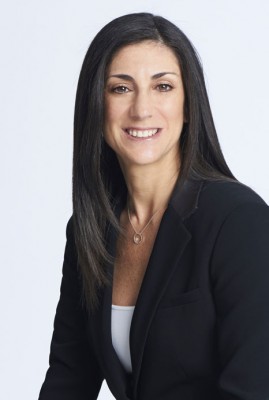
Executive VP Marketing
Bravo and Oxygen Media
In an age of pinging personal devices and countless cable channels, Ellen Stone knows her audience has a lot of distractions vying for its attention. That’s why the executive vice president of marketing for Bravo and Oxygen networks is playing in the mobile, social, and entertainment realms to catch a multiplatform audience no matter what screen is being used.
We’re living in an interesting age for TV. With online-exclusive series and TV on-demand, it’s a very different marketplace than it was five years ago. What does TV entertainment look like to you, and what excites you about it?
Ellen Stone: In the last five years, the way people walk down the street is different. They’re not looking up at a paper advertisement; they’re looking down at their phone. You have to grab viewers quickly and keep them happy. I’m using the same toolbox but using it extremely differently. Interests will show some consistency—our viewers love beauty, fashion, pop culture, and personalities—but the rule of the road for the new entertainment era is creating content that’s social, viral in nature, and provides an opportunity for the user to share it, interact with it, and get responses.
What does the Bravo-Oxygen viewer look like? How are they driving your efforts?
Stone: They are an incredibly tech-savvy, innovative bunch of people. We’ve got the Apple people, the Android users, the people waiting in line for the newest social technologies. And for Oxygen, because viewers are so young, they don’t even know what it’s like not to be so digitally engaged. I’ve got an audience that appreciates every touch point and engagement opportunity we can give them. They don’t just want us to talk to them, they are craving a conversation with our shows. On the Bravo side, we’ve created new ways of storytelling that literally engage the audience across different platforms. Transmedia programming tells the story both in a linear fashion on air as well as on digital platforms. In order to fully enjoy the story, the viewer must engage on both platforms.
Isn’t that a little risky? How do you know your viewers are going to take that extra step to continue the story online?
Stone: When you’re a marketer, you have to really know your brand and audience, and you have to take certain educated risks. Did Bravo know with 100 percent certainty our audience would follow our shows to other platforms? No, but we had seen that behavior in other ways.
How so?
Stone: On Oxygen, when we have online biographies of cast members, we see people going to those platforms. We knew our audience and their behavior so well that we could use the brand to enhance that behavior.
What does transmedia look like? How do you keep the story going online?
Stone: Top Chef is a program for which we produce unique on-air and online content. In a purely linear world, our viewers see the elimination of one chef each week, and that’s it. In a transmedia world, a relevant digital extension affects the TV show. When contestants are eliminated, they keep going in the digital continuation. Other eliminated chefs contend for a chance to get back onto the on-air series. That audience that doesn’t realize there’s a digital series doesn’t understand when chefs come back. That’s how we need to talk to our audience now: we need to use every single platform to make the content as rich, exciting, and engaging as possible.
How does social media fit in this picture? What does the medium allow you to do that you couldn’t previously?
Stone: Social media really lends itself to the back-and-forth we want to have with our viewers. And we’ve seen the payoff in rewarding viewers for participating in conversation about our shows and bringing others to the discussion. At Bravo, we’ve created the Bravoholic, people—fans—who have a social imprint. They’re relevant in the social space and relevant to the Bravo audience. We allow them to be in charge of some of our messaging for the week. They get to ask Andy Cohen, host of Watch What Happens Live, a question.
By this point, even smartphone holdouts are familiar with text-to-vote interaction with their TV entertainment. Are Bravo and Oxygen doing anything with real-time fan feedback?
Stone: Because most of our shows are taped, it’s hard to engage on-air in real time, but we’re experimenting. Million Dollar Listings is a Bravo program about six realtors selling their properties. In the middle of the show, a poll will come up asking how much viewers think houses are worth. Or on Top Chef, you’ll see two finalists and a poll asking viewers who should win. Results show up in real time, which is one level up from a simple, call-in-and-vote. Everything about our way of marketing is about giving the audience an opportunity to interact with the show in a way that’s meaningful.
How have you seen the evolution of marketing on social media platforms? What did the early days look like for Bravo, and where are the networks now in understanding this medium?
Stone: We absolutely haven’t figured out social media yet, but we’re getting better at it. It used to be that you want to be on Twitter, Facebook, Instagram, etc. but each post was just a moment in time. You weren’t seeing much scale outside of these viral events like [the] Cairo [uprising]. We used to post things over and over, saying, “Tune in!” but with very little strategy. Now we know we have to create relativity for our particular audience. People are getting into a reliable behavior pattern that feeds viral campaigns because they’ve been doing it for a while. We can understand how they’re using the platforms and that makes it easier for us to understand how to create impact.














